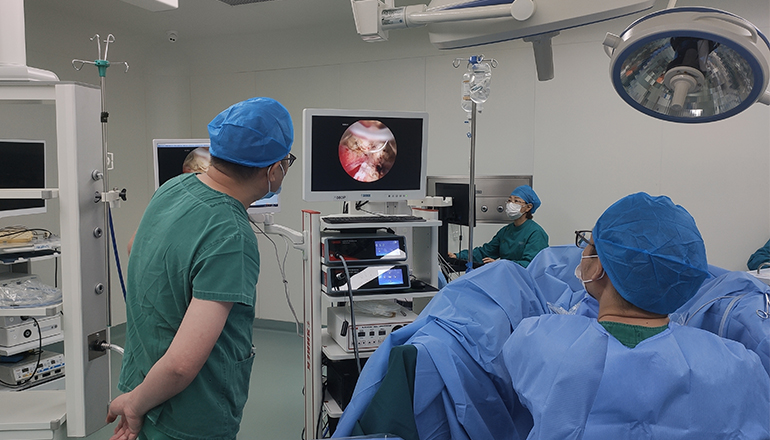- Shanghai, China
- [email protected]
- +86-21-58189111
Prostate operations are surgical procedures that involve the removal of part or all of the prostate gland. These procedures are typically performed using endoscopic equipment, which allows surgeons to visualize the prostate gland and surrounding tissues through a small incision. There are several types of endoscopic equipment that hospitals need in order to perform prostate operations, including:
Endoscope: The endoscope is a long, thin tube with a camera and light at the tip. It is inserted through a small incision in the body and allows the surgeon to visualize the prostate gland and surrounding tissues. There are several types of endoscopes that can be used for prostate operations, including rigid and flexible endoscopes.
Video monitor: The video monitor displays the images captured by the endoscope, allowing the surgeon to see inside the body. The monitor should be high-resolution and large enough for the surgical team to view the images clearly.
Surgical instruments: The surgeon will need a variety of surgical instruments to perform the prostate operation. These instruments may include a scalpel, scissors, forceps, and clamps.
Electrosurgical equipment: Electrosurgical equipment is used to cut and coagulate tissue during the procedure. This equipment includes an electrosurgical generator, which provides the electrical energy needed to cut and coagulate tissue, and an active electrode, which is used to deliver the energy to the tissue.

Anesthesia equipment: Anesthesia is necessary to ensure the patient is comfortable and pain-free during the procedure. Hospitals will need anesthesia equipment, including a ventilator, anesthesia machine, and monitoring equipment, to administer and monitor anesthesia.
Surgical table: The surgical table should be able to be adjusted to allow the surgeon to access the patient's prostate gland at the correct angle. It should also be able to support the patient's weight and be comfortable for the patient during the procedure.
Image-guided equipment: Some prostate operations may require the use of image-guided equipment, such as ultrasound or MRI, to help the surgeon visualize the prostate gland and surrounding tissues more clearly.
Hospitals require a variety of endoscopic equipment to perform prostate operations. This includes an endoscope, video monitor, surgical instruments, electrosurgical equipment, anesthesia equipment, a surgical table, and potentially image-guided equipment. The specific equipment needed may vary depending on the type of prostate operation being performed and the patient's individual needs. It is important for hospitals to have the necessary equipment and expertise to perform these procedures safely and effectively.
It is also important for hospitals to have a well-trained surgical team that is knowledgeable in using endoscopic equipment for prostate operations. The team should include a surgeon who is experienced in performing these procedures, as well as anesthesiologists and nurses who are skilled in providing anesthesia and patient care during the operation. Proper training and ongoing education are crucial to ensure that the surgical team is up-to-date on the latest techniques and technologies for performing prostate operations.
In addition to the equipment and surgical team, hospitals should also have appropriate infection control protocols in place to minimize the risk of infection during and after the procedure. This includes proper sterilization of equipment, use of personal protective equipment, and appropriate handling and disposal of medical waste.
In summary, hospitals need a range of endoscopic equipment to perform prostate operations, as well as a well-trained surgical team and infection control protocols. The specific equipment needed may vary depending on the type of procedure being performed and the patient's individual needs. Prostate operations are complex procedures that require a high level of expertise and care, and it is important for hospitals to have the necessary resources and expertise to provide safe and effective care to patients undergoing these procedures.
Leave a Comments